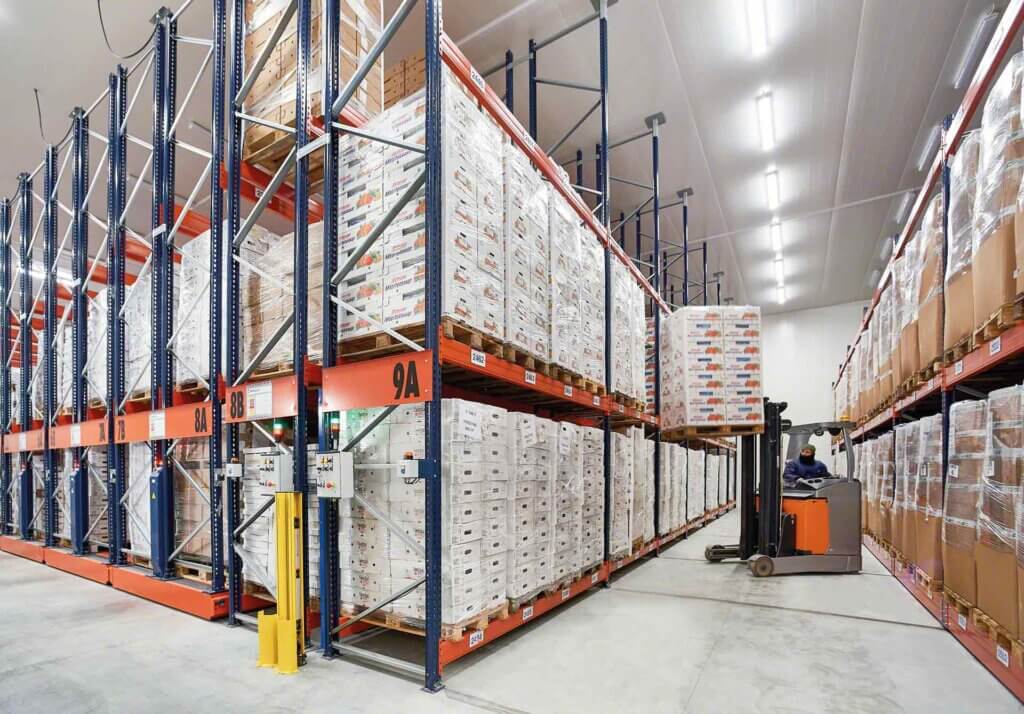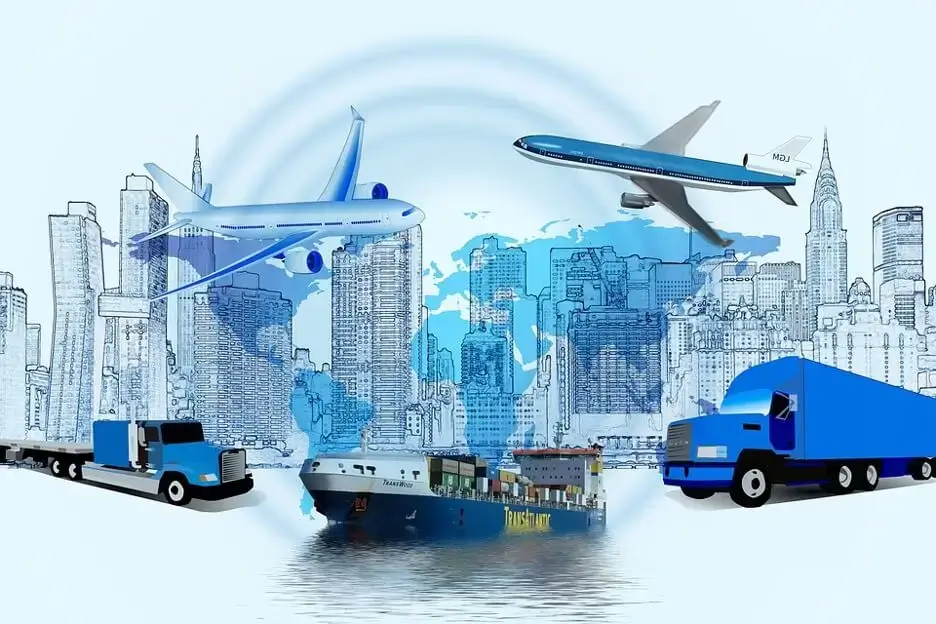
The management of the whole cold chain, including the items that are in transit, being processed, being stored, and being displayed, is known as cold chain management.
Temperature-sensitive products rely on cold chain management for product efficacy, product safety, and compliance with relevant regulatory standards. Pharmaceuticals, vaccines, biologics, lab samples, diagnostic tools, chemicals, food, and drinks are among the products that require cold chain solutions.
The supply chain’s key element for managing temperature ranges and air quality, including levels of carbon dioxide, humidity, and oxygen, is cold chain management.
Products may deteriorate, lose value, and suffer financial consequences if the cold chain management process is interrupted or fails throughout shipping, processing, storage, and display. All parties engaged in the supply chain, from the producer to the shipper to the final client, depend on maintaining the proper temperature and product environment.
The cold chain is maintained, tracked, and altered from production through delivery and display using the most recent advancements in thermal packaging technology.
What is a Cold Chain?

An unbroken flow of a certain thermal profile during the production, packing, and delivery of a temperature-sensitive product is known as a “cold chain.”
Consider the cold chain as a supply network that regulates temperature. A steady and uninterrupted chain of chilled manufacturing, production, packing, transport, and distribution is necessary for a successful cold chain.
Knowing and controlling the shipping environment, package design, length of the shipment(s), and important control points along the process are necessary for maintaining the cold chain.
The History of Cold Chain Management
British fishermen used ice to preserve their catch in 1797. American inventor Frederick Jones created the first mobile air-cooling system for moving perishable goods in 1938. These units played a crucial role in the transportation, storage, and security of the food, medication, and blood needed in military hospitals and on the battlefield during World War II. The Interstate Highway Act of 1956 is responsible for the expansion of the cold chain business.
The Importance of Cold Chain Management

1.Integrity of the Products and Goods
Cold chain management is necessary for the items and products’ integrity, quality, use, and safety. Utilizing the most recent temperature tracking, thermal packaging, and monitoring, and storage technologies, modern cold chain management helps maintain the safety, quality, and integrity of temperature-sensitive products.
Cold chain management and logistics keep the supply chain of essential commodities and products running efficiently, whether it’s ice cream frozen, keeping milk cold, or vaccinations safe. Your clients anticipate receiving their orders free of defects including bruising, discolouration, textural changes, bacterial growth, and worse. For you and your clients, cold chain management does this.
2. Item Safety
By managing the cold chain, you avoid making the wrong kinds of headlines. Nobody wants to be in the news for selling dangerous goods and products. In order to keep people safe, effective temperature control and monitoring ensures that your standards and legal requirements are met.
Key components of contemporary cold chain management include ongoing monitoring of temperature, air quality, humidity levels, energy consumption, GPS location, delivery and storage conditions, and more.
3. Minimizing Loss and Waste
Preventing product loss, damage, and waste is one of the biggest issues faced by every supply chain. Products are traced and monitored at every stage of the cold supply chain thanks to cold chain management. For the security and protection of their goods and products, businesses rely on specialized cold chain parcel, refrigerants, reefers, and pallet systems, temperature monitoring, and specially insulated containers.
No corporation can afford the financial or brand loss that comes with the cascading effects of destroyed temperature-sensitive products given the narrow margins and supply chain pressures.
4. Improving Efficiency
It is not easy to transport items and cargo over land and ocean. It can be expensive, time-consuming, and ineffective. Companies may optimize the shipping, distribution, and storage of their products thanks to cold chain management, which includes integrated smart IoT-enabled tracking and monitoring. This helps to enhance efficiency and save costs.
5. Customer Service
Your B2B and B2C clients are interested in your goods and services. However, they demand that these goods be delivered promptly and in accordance with strict safety and quality standards. Logistics and cold chain management provide you the knowledge and control over the delivery, storage, and distribution processes needed to satisfy client expectations.
Services for managing the cold supply chain, including Just in Time (JIT) delivery of thermal packaging materials and a GAP analysis of the cold chain’s best practices, make sure that both you and your clients profit from a well-organized, cost-effective cold supply chain.
6. Standards for Compliance and Regulation
Observing the rules governing the secure production, distribution, and transportation of and keeping temperature-sensitive items in storage is essential. The US FDA Food Safety Modernization Act (FMSA) regulations, for instance focuses on guarding against food contamination. These guidelines, together with describe standards for the sanitary transit of human and animal food regarding specifications for in-transit temperature tracking and data monitoring. The CDC also offers comprehensive instructions for monitoring and maintaining the cold chain for vaccines. These include of vaccines, suggested storage temperatures, and needs for storage and temperature control.
It is critical that businesses stay current on FDA, CDC, Canadian, EU, and guidelines from the World Health Organization. Contact us now for a friendly initial consultation.
The Cold Chain Management Process: What Is It?

The cold chain management process entails the safe and secure storage, packing, tracking, shipping, customs clearance, and delivery of all goods.
To monitor and control the temperature, logistics, movement, delivery, and security of temperature-sensitive items and supplies, the cold chain management process significantly relies on technology.
- Storage: The key to efficient cold storage is the use of items like insulated containers, vaccine and medical refrigerators and freezers, refrigerants, and cold rooms/chillers. Equipment and infrastructure for cold chain storage come first in cold chain management.
- Packaging: To maintain and control temperature and security when items depart storage facilities, cold packaging is essential. Cold chain package and pallet systems, refrigerant blocks, gel packs, gel bottles, and insulated containers and envelopes are just a few examples of the goods that keep your goods cold, increase the effectiveness of your shipping, and reduce waste, damage, and loss.
- Tracking: Data loggers and temperature indicators provide real-time temperature and GPS monitoring and tracking for businesses, shippers, and their clients. This data is essential for preserving the cold chain and guaranteeing the integrity and quality of the final product.
- Transportation: Due to the worldwide supply chain, a variety of methods are used to transport commodities and products that are sensitive to temperature changes. The cold supply chain is kept in motion by specialized vehicles like refrigerated vans and reefer containers as they travel through land, air, and sea.
- Customs clearance: completing the necessary documentation at this stage of the cold supply chain ensures that goods may be supplied and transported in a timely manner. Failure to adhere to customs clearance rules may cause delays, which may lead to product loss, quality hazards, and increased costs for delivery, storage, and transportation.
- Product management: ensures that your items are moved and handled securely and safely within the cold chain by using shipping supplies such specialized cold pallets and parcel, insulated envelopes and containers, and warehouse best practices using autonomous mobility robots and forklifts.
- Delivery: In the end, a well-oiled and efficient delivery procedure is what will allow you to deliver temperature-sensitive goods and products to your B2B and B2C clients. Reviewing paperwork, following internal handling best practices, managing risks, and securing legal warehousing, storage, and display systems are all part of the cold chain management process.
Supply chain vs. Cold chain

Do you know how the supply chain and the cold chain vary in these 4 ways?
- Logistics: Comprehensive and in-depth logistics planning and management are necessary to sustain the cold chain. Products that need a specific temperature cannot, for instance, be left unattended in a delivery yard or while waiting for customs clearance.
- Specialized equipment: Vaccine freezers, reefers, and refrigerators, insulated pallets and containers, temperature monitors, and data trackers is often used to support and maintain the cold chain.
- Public health risks: when food or vaccinations are not stored in temperature-controlled facilities. The cold chain is crucial to public health and safety, from food poisoning and food instability to faulty vaccinations and the dangers of disease transmission owing to vaccine shortages.
- Documentation: Additional paperwork and document verification are required to comply with rules. The cold chain has more documentation requirements than the usual supply chain because of additional regulatory requirements from the FDA, DOT, CDC, WHO, EU, and other organizations.
Temperature control and sensitivity are key components of the cold supply chain. The safe manufacture, packing, transportation, supervision, and delivery of a variety of products and items all depend on the cold supply chain.
Cold chain management is required for certain temperature-sensitive products.
Any temperature-sensitive product requires cold chain management. These items, which are temperature-sensitive, require cold chain management:
- Vaccinations,such as COVID-19 vaccines.
- Blood, biologics, insulin, and other medical supplies are examples of medical goods.
- Consistently cold temperatures are needed for wine in order to prevent early aging and taste loss.
- Ice cream and gelato are frozen treats that must be kept that way to stop bacterial development, crystallization, and flavor loss.
- Ice cream and gelato are frozen treats that must be kept that way to stop bacterial development, crystallization, and flavor loss.
- When not stored below 40 degrees F or frozen at 0 degrees F, perishable meat, fish, and poultry are especially prone to bacterial development.
- When the cold chain is not maintained, fresh and frozen fruits and vegetables are susceptible to bruising, skin damage, bacterial development, taste loss, and other problems.
- Cold chain management is necessary for all dairy products, including fermented dairy, yogurt, oat milk, and milk substitutes. For instance, to avoid bacterial development, milk must be pasteurized, packed, transported, and kept at or below 45 degrees F.
Click here to find out more about Cold Chain Packing & Logistics today.